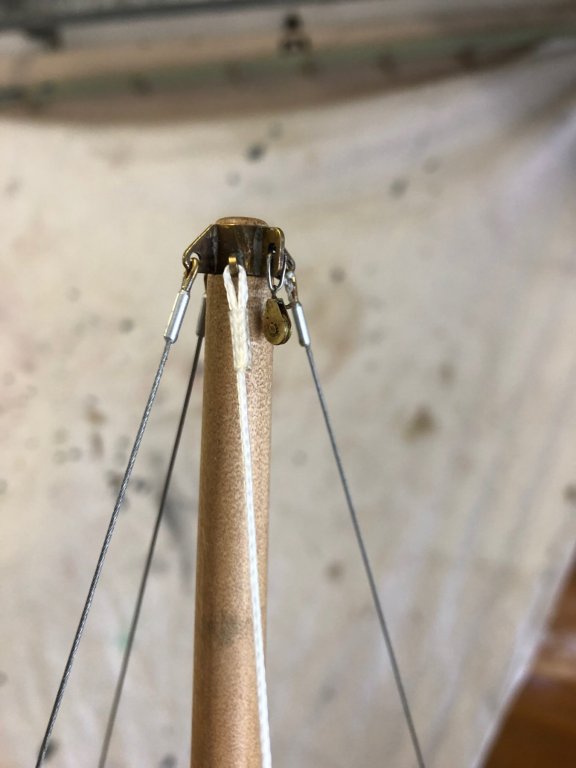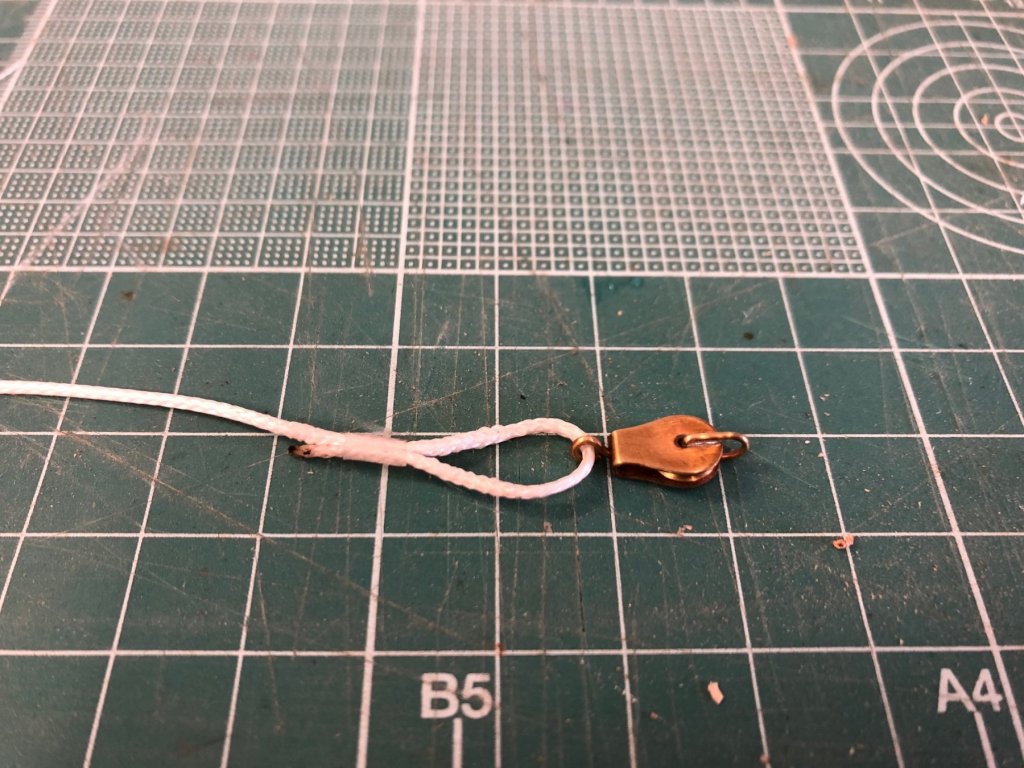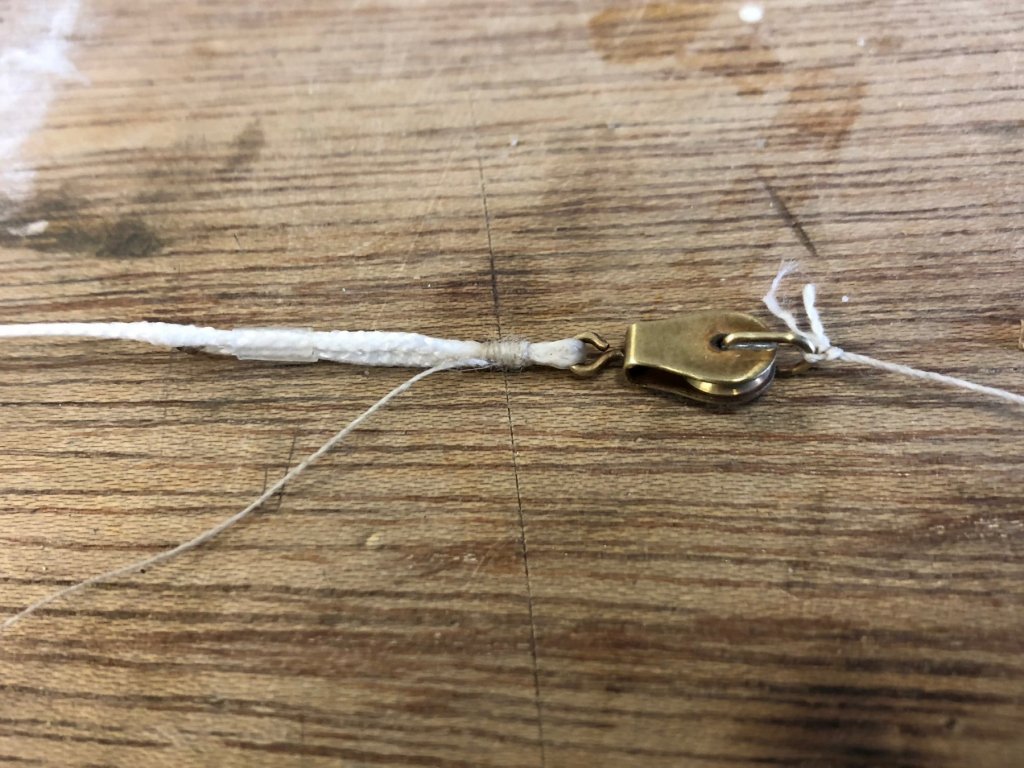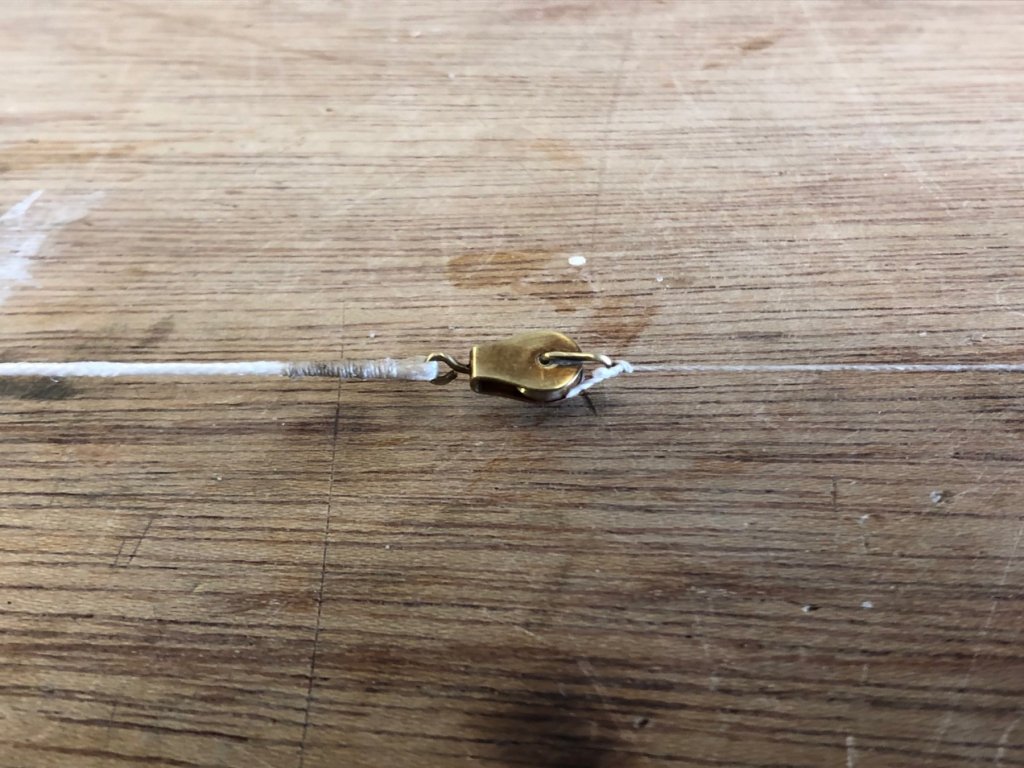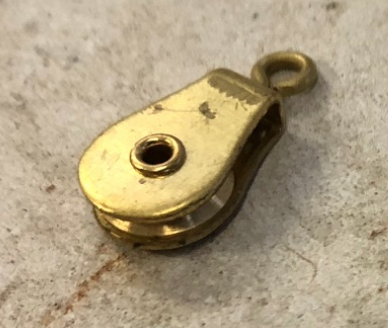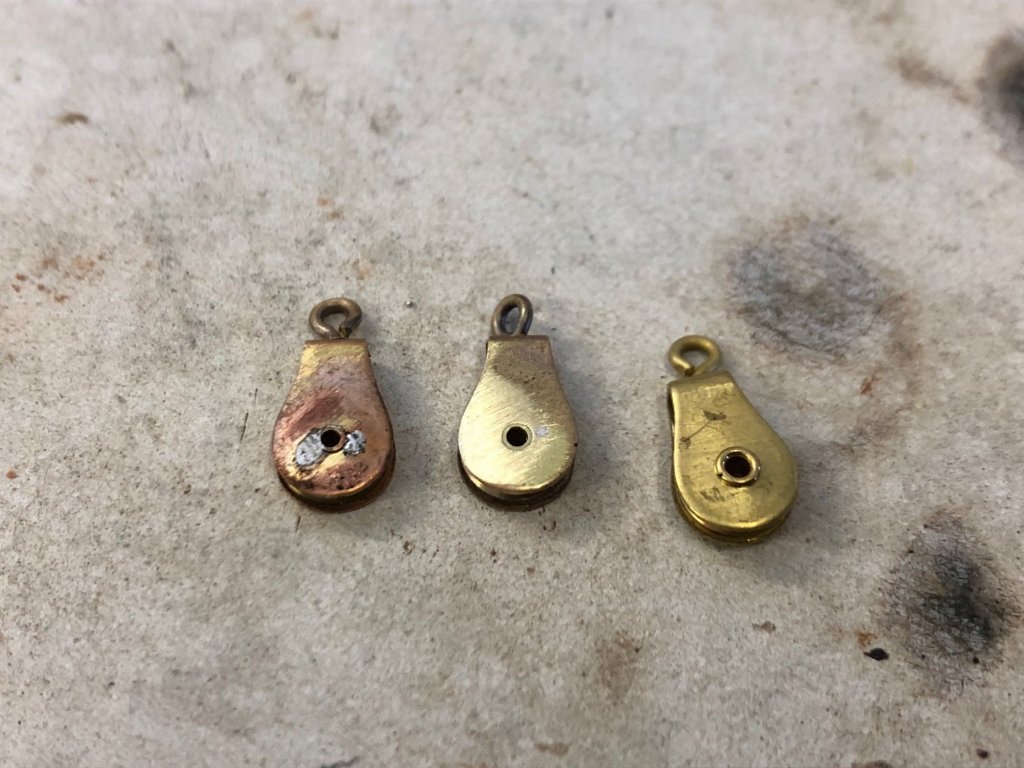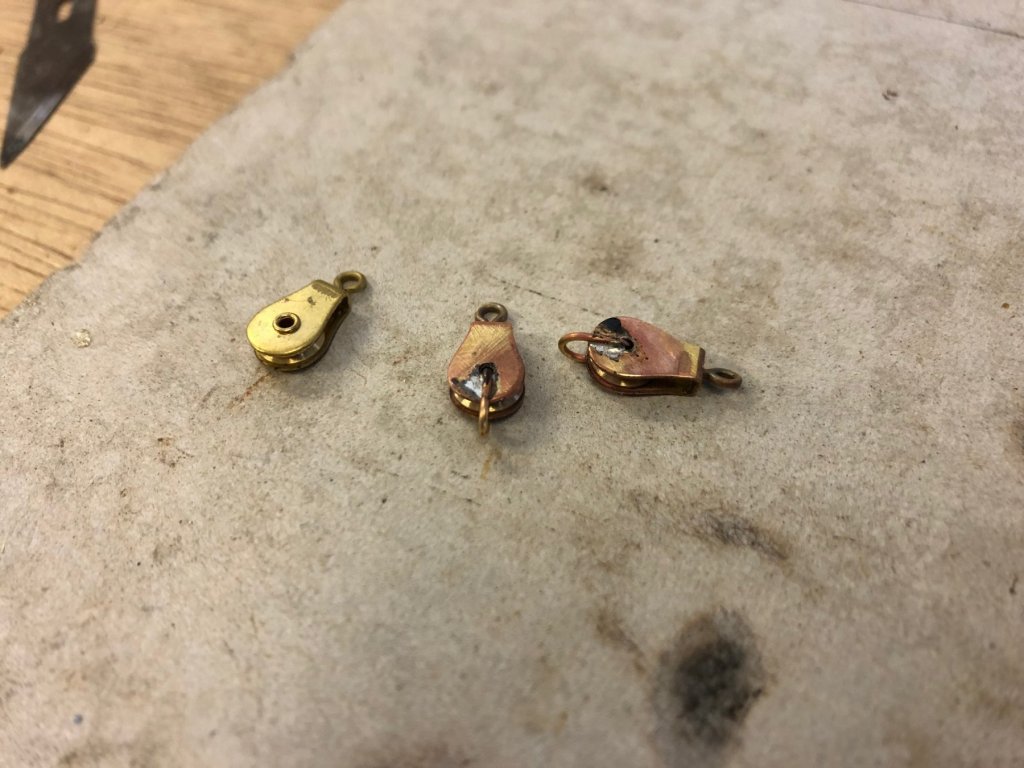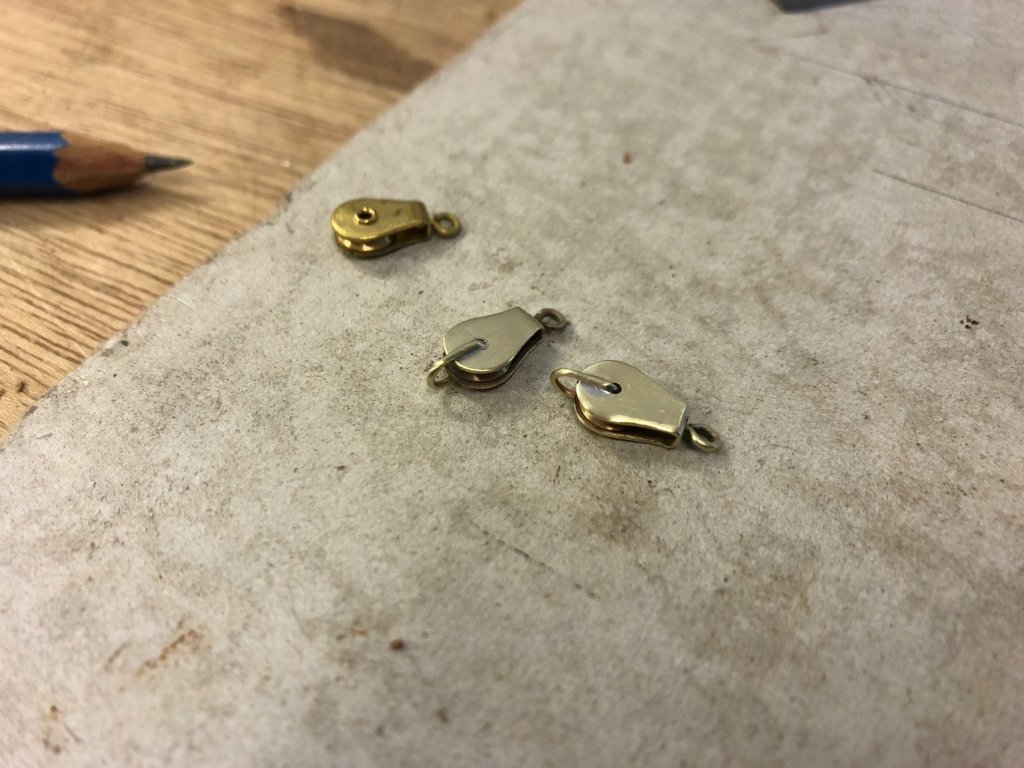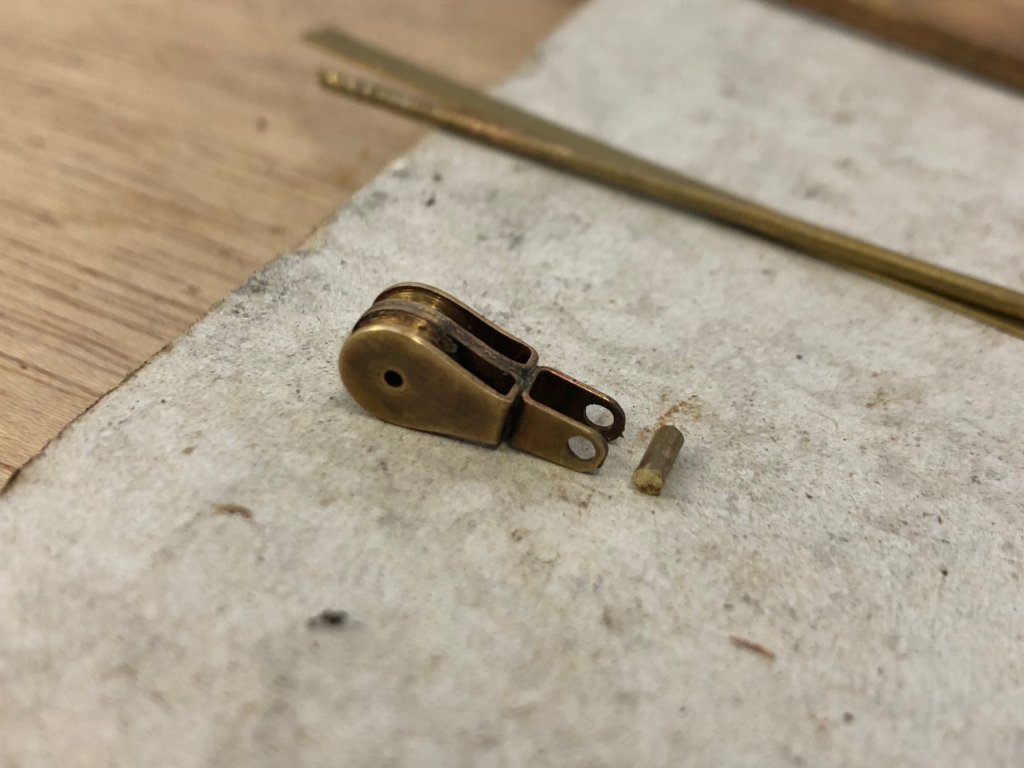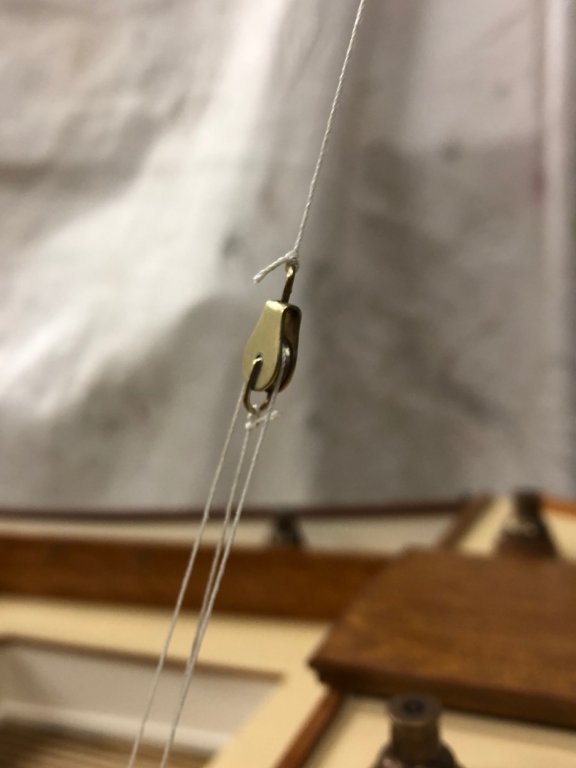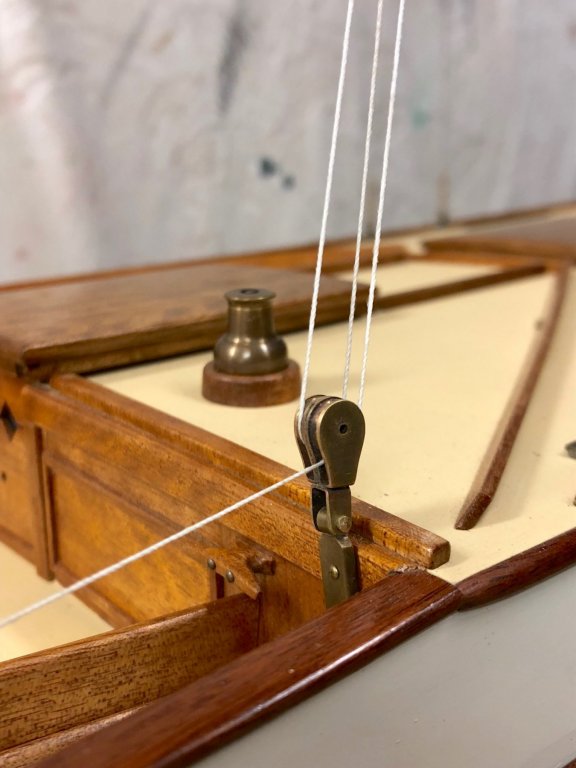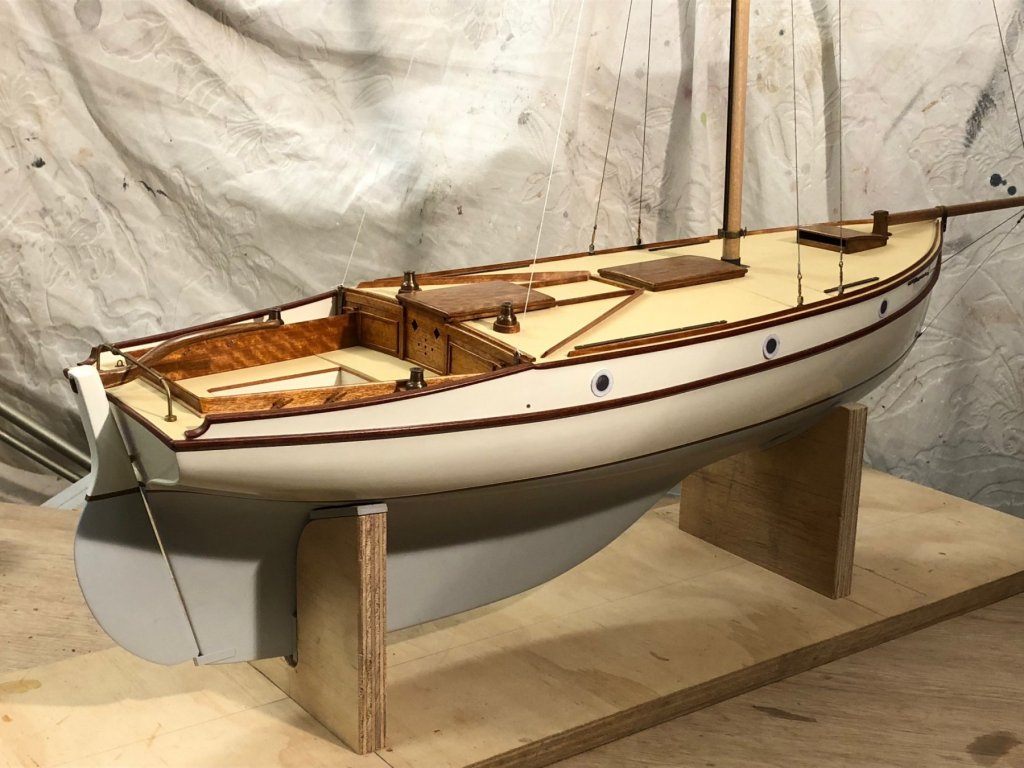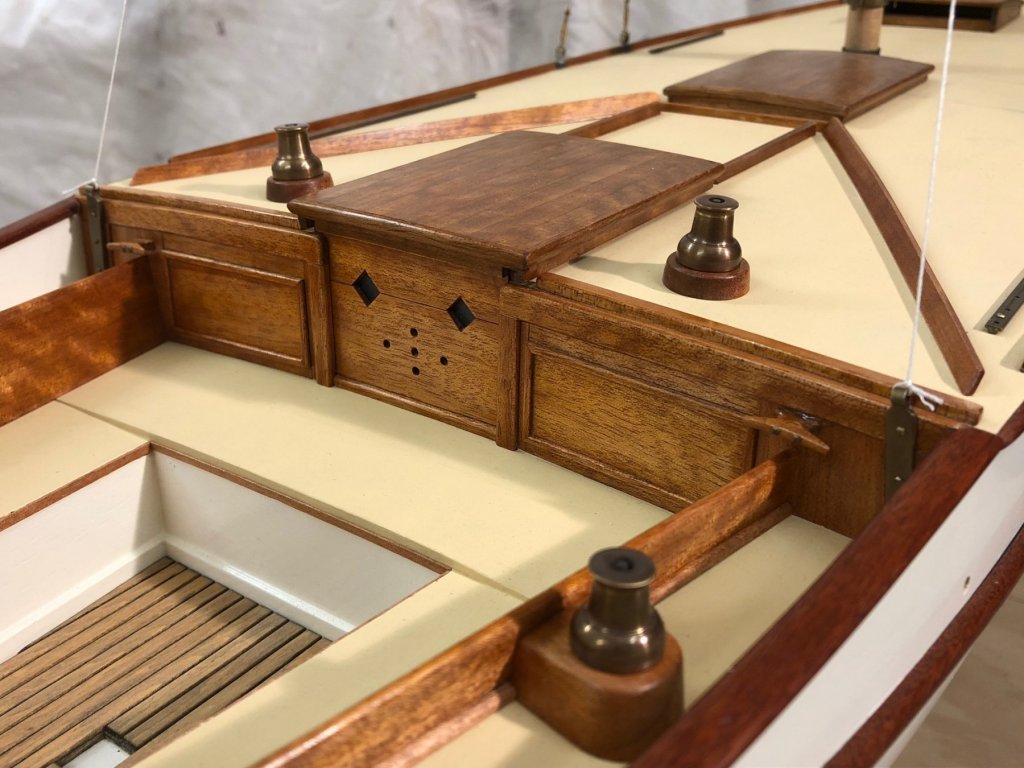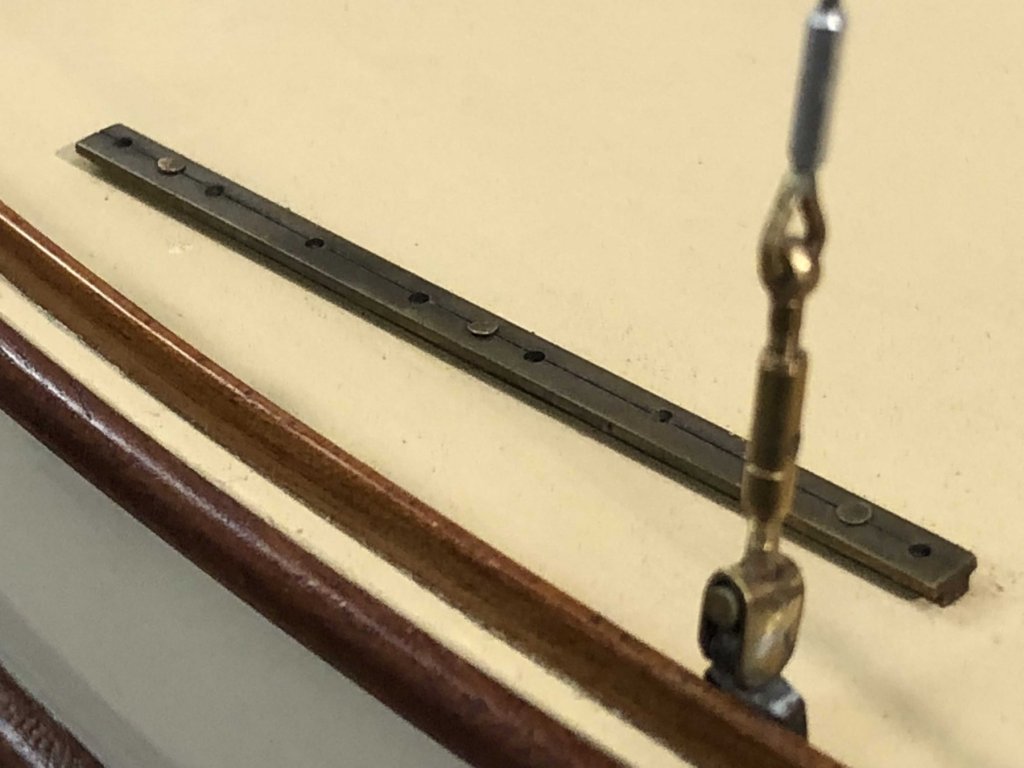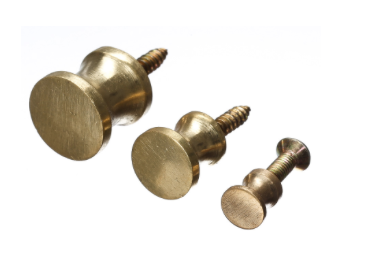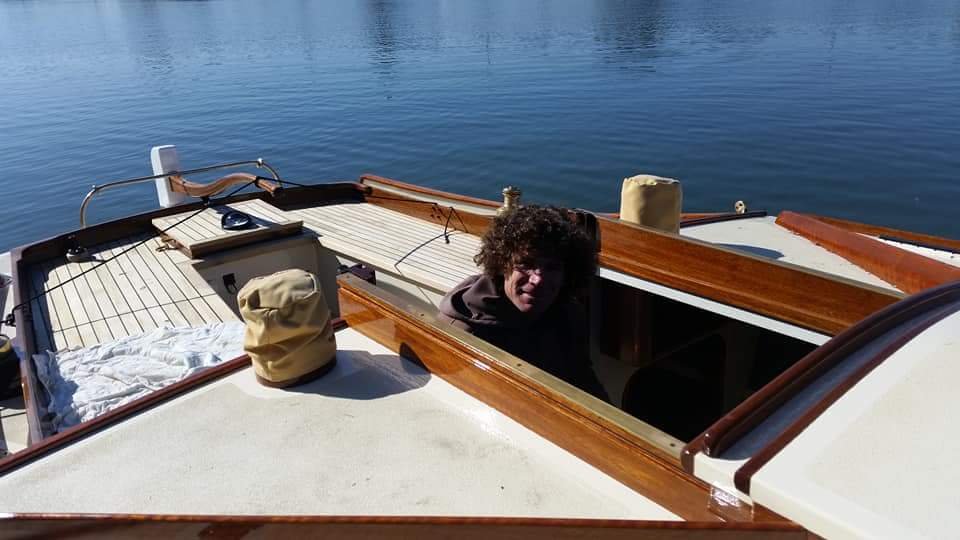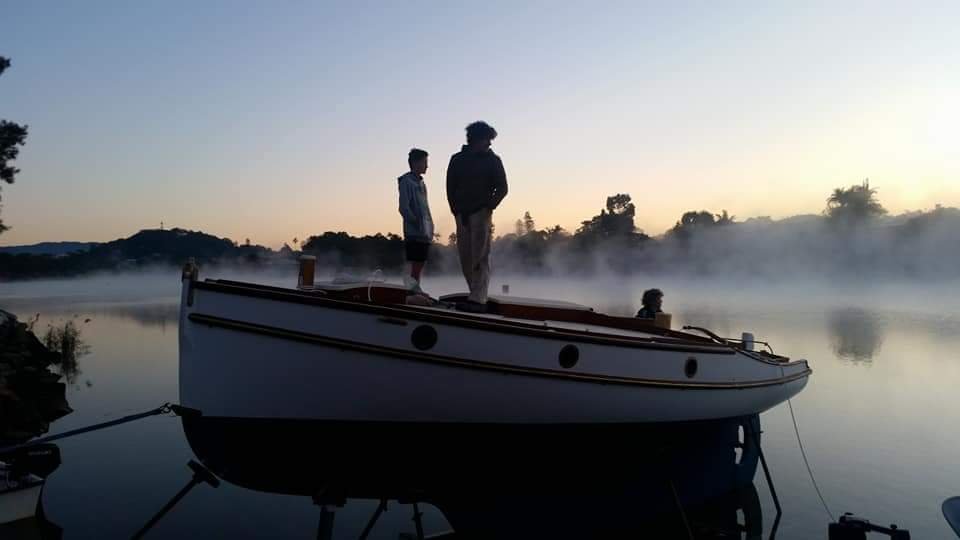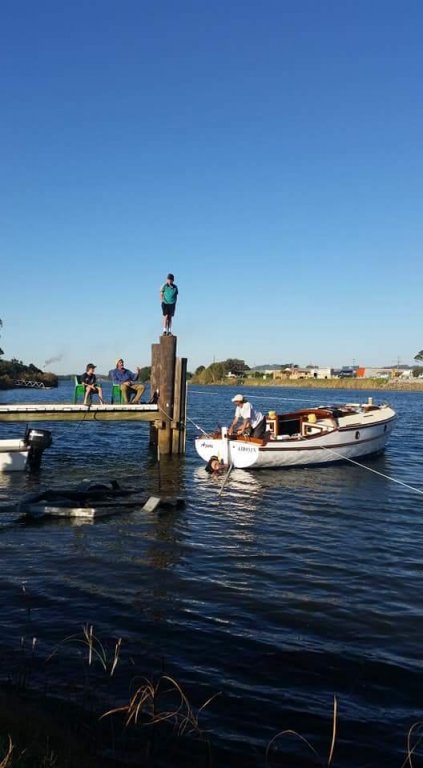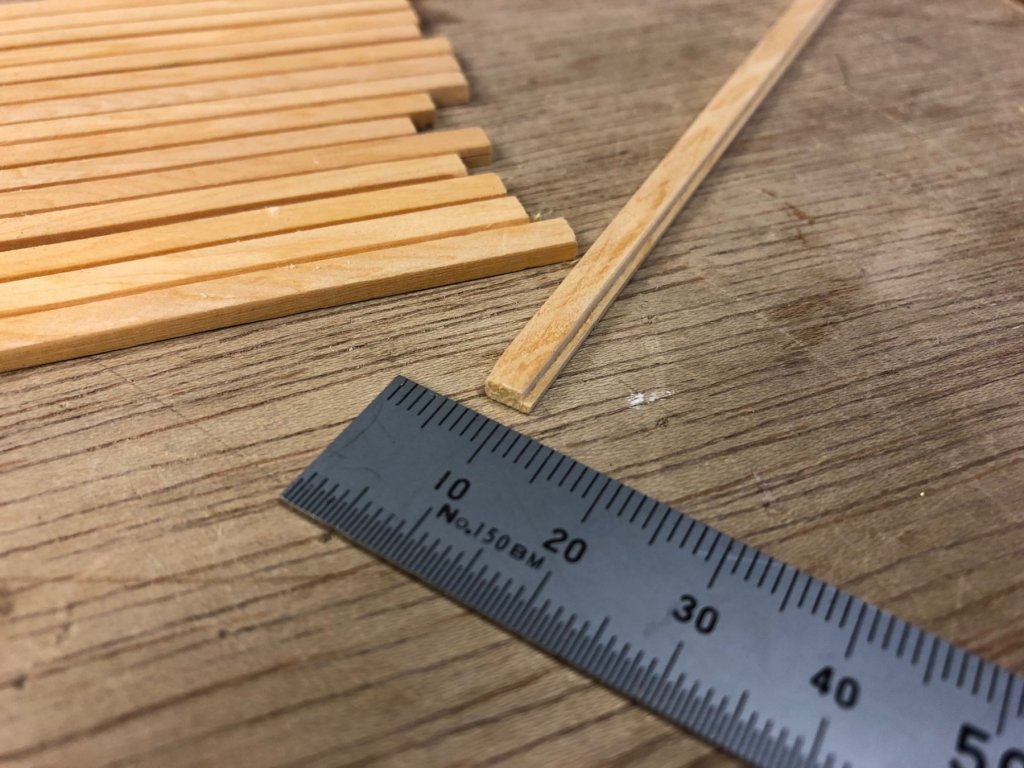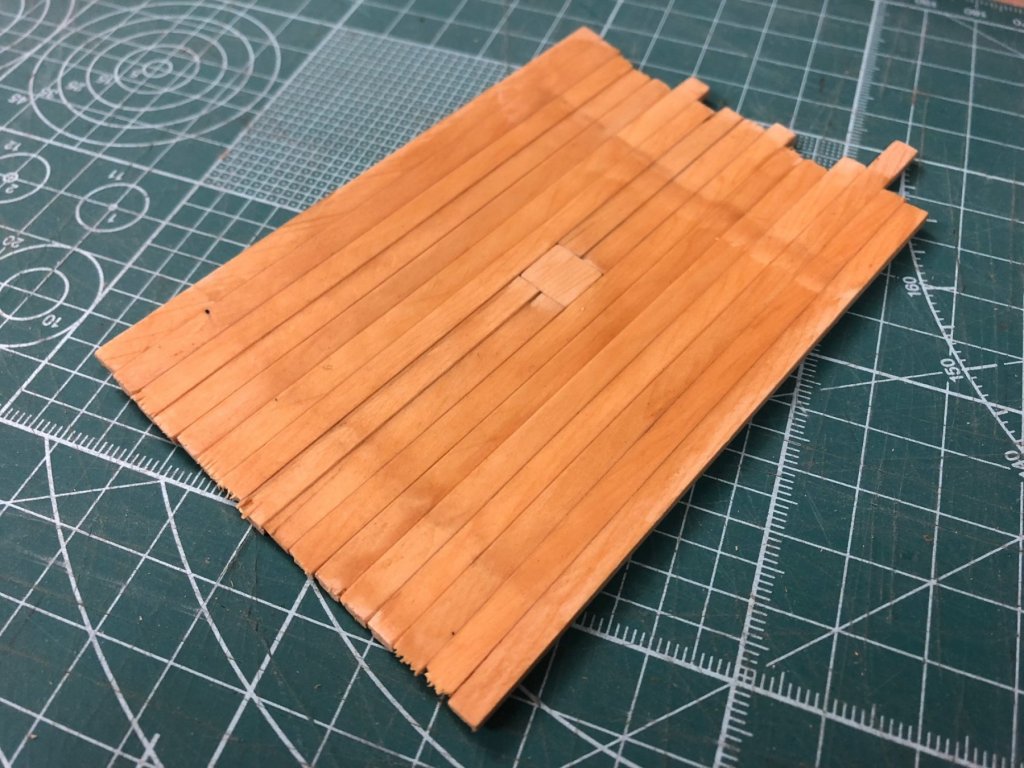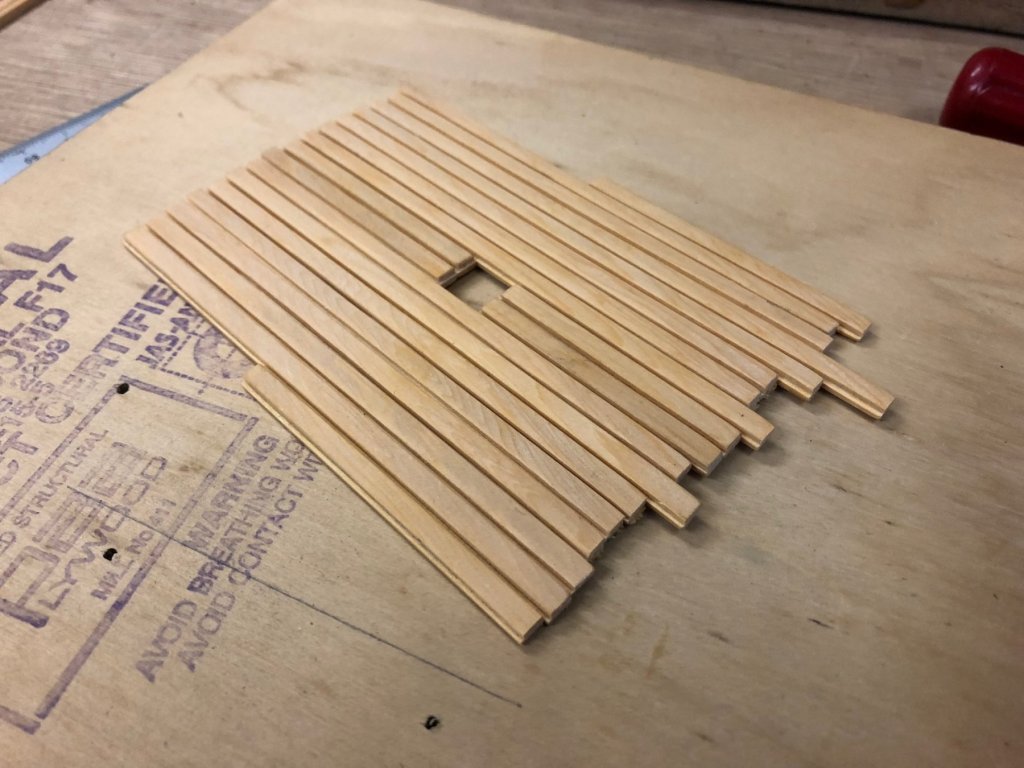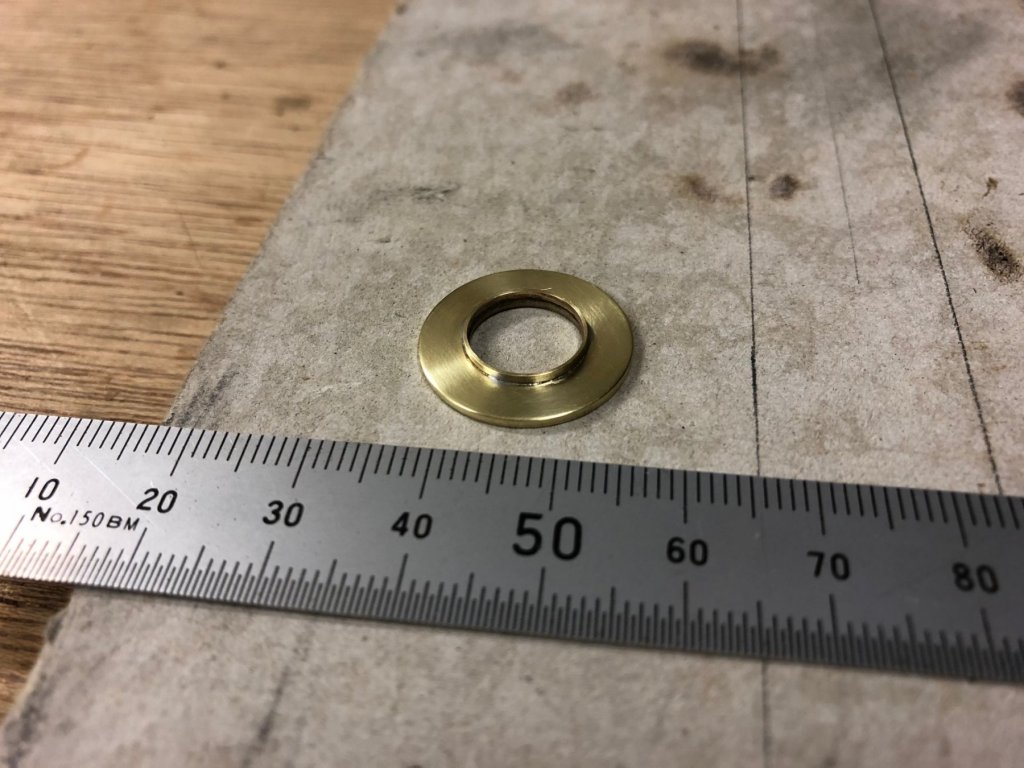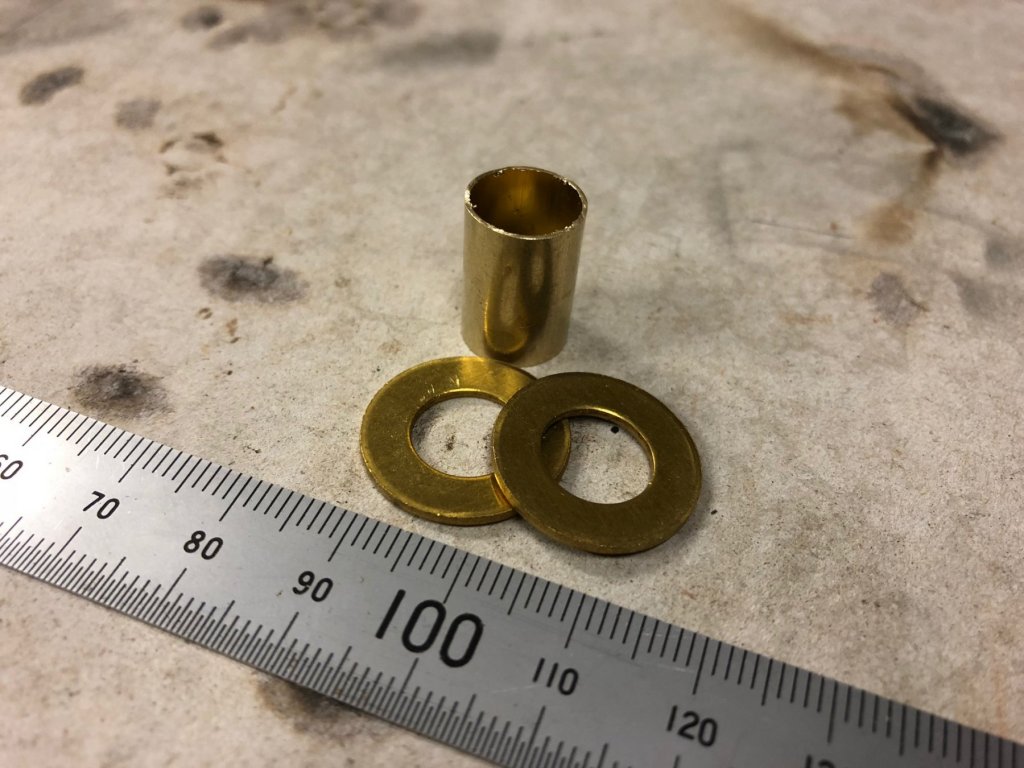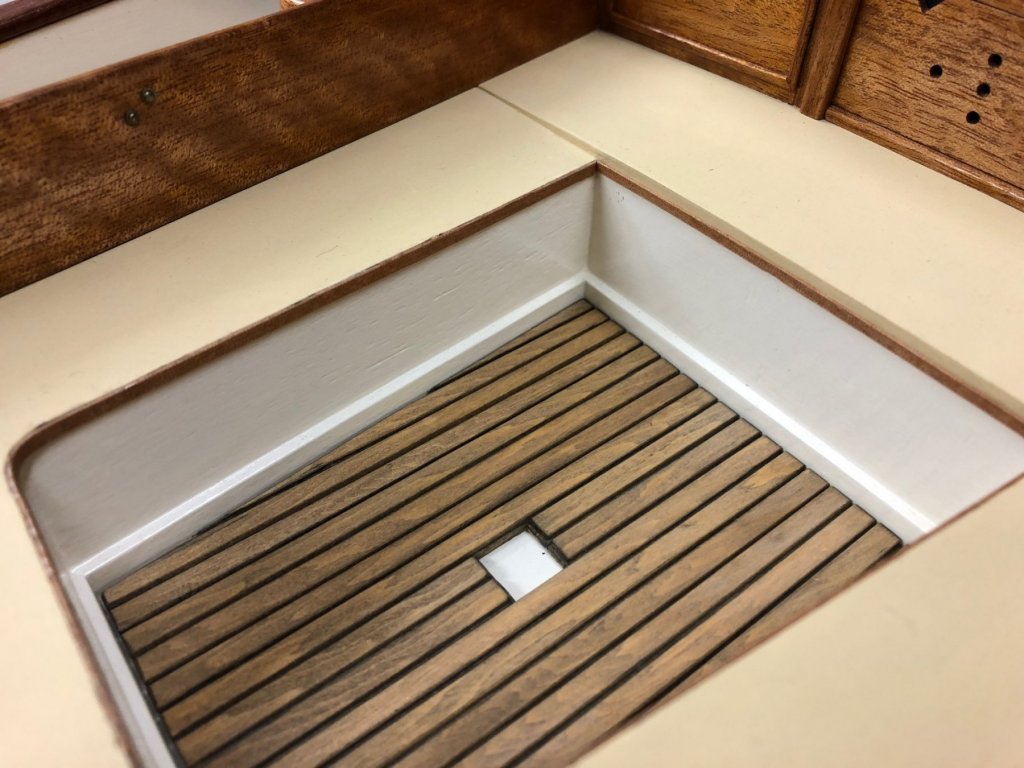-
Posts
836 -
Joined
-
Last visited
Content Type
Profiles
Forums
Gallery
Events
Everything posted by Mark Pearse
-
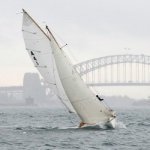
15' Dinghy by Bedford - FINISHED - 1:1 scale
Mark Pearse replied to Bedford's topic in Non-ship/categorised builds
beautiful. Thanks for sharing, Bedford. Mark -
HI Michael looks amazing, & ever less space to do it in... What is the function of the line that runs through the sheave at the bottom of the topmast - & why it does the run through the bottom sheave? thanks, Mark
- 2,215 replies
-
Hello Maury, she looks to be strongly built as a boat - how large in actual size are the ribs & their spacing? I assume they are sawn pieces rather than bent...? They have a very interesting shape, quite dishy for a sizeable vessel. thanks, Mark
-
Hi GL this is going to look fantastic, the staining & timberwork look really authentic, you can almost smell the bilge already. Mark
- 219 replies
-
- smack
- cross-section
-
(and 2 more)
Tagged with:
-
lovely work; the fine attention to detail makes it difficult to see what the actual size is. Mark
- 2,215 replies
-
Hi Michael, I hope you don't mind some more comments on aspects of this discussion: Roller reefing isn't hard to use, & it does allow more shades of adjustment (eg: to balance the rig) than reefing points. I don't think lazyjacks are possible, I think it means the topping lift goes to a rotatable fitting at the boom tip. I'd just add that you can still adjust the aerofoil shape of a gaff main without a loose foot - the luff tension & also the peak halyard will both have an effect. Mark
- 2,215 replies
-
I think they will clean up well, & agree with Gotz that something to help hold them is a good approach for delicate flat objects. Another idea is to put some rubber contact glue onto the face of a flat piece of wood & let it dry fully. The dried glue might be enough to hold the arcade pieces gently & safely while being sanded. Mark
-
In a yacht the shrouds are not usually very heavy, 2mm (20mm scale) is a lot, but that might be what you are after visually. Your estimates on other sizes sound reasonable. The main sheet might be even more than 12mm, possibly 16mm. Good luck with it.
-
Hi Vaddoc excellent, the results look just like 3 strand rope - have you decided the diameters you'll use?
-
Hi Vaddoc yes she's looking lovely. I agree with John on a thwart being a good option; or if it's a step or two perhaps open like a small ladder? Saving space is always good, however you decide to proceed.
-
Hi Steven was it usual for the two sails to be the same size as each other? I feel the forward sail (for the reduced sail plan) looks large given where it sits on the overall hull. However the sail/hull relationship is probably only important if a boat hopes to sail into the breeze rather than just across or with it. Do we know if they used sails to go into the wind?
-
Hi Michael is that a model motor boat lurking below? Looks a bit like a Fairey? Sounds like the sailing season ended very suddenly. Mark
- 2,215 replies
-
I've been working on the running backstays, doing the backstays themselves. The backstays are made from 1mm braided rope from Harbor Models (US), it replicates braided modern rope. Initially I tried some clear heat shrink tube for simplicity at the mast head end but it looked too bulky. Access is tight so I thought it might be ok, but then changed direction & also came up with a simple method that helped the process & used the heat shrink tube. Firstly, heat on a small piece of tube well below the whipping. Start the whipping, secure with a couple of hitches & put some dilute glue on to hold. Remove the tube & cut the tails off, with a tapered end; Then finish off the whipping. My whipping is a bit rough, definitely more agricultural that sophisticated but it's a better result than the tube. This process helped a lot because temporarily holding the rope while you start it off made it easier. thanks, Mark
-
Hi John, best wishes to you & good to hear from you. Hi Vaddoc, the issue of simplicity is an interesting one for me: I've tried to imagine the person who commissioned this yacht to be built as having some money but not enough to go mad, so in my imagination some details would be done to save money here & there. Also I feel that more complex fittings don't always add to a boat's beauty, the Herreshoff Buzzards Bay 25 is a particular example of severe simplicity & beauty.
-
this looks very interesting, I'll be happily following your build Mark
- 219 replies
-
- smack
- cross-section
-
(and 2 more)
Tagged with:
-
I've started on the running rigging & have been looking around at various ready made blocks, & also considering what I could do from scratch. The final call was to buy some off the shelf but improve their appearance. These are the blocks, the shape is ok but the flanged axle looks a bit crude. So I decided to sand off the flanges, & solder the axles in position. They immediately look better. These are for the running backstay tackles & I want 2 single blocks with beckets plus 2 doubles. The beckets came up well & look realistic. Originally I was going to laminate a thin piece of timber on both sides of the blocks but it wasn't looking good - too bulky - & I believe that full metal blocks were popular the 1960s, so no timber facings, at least on these blocks. The doubles are two blocks soldered together, with a square U bracket for fixing to the chainplate. The tackle set temporarily up to see how well it leads, & I'm happy that the double block loads the chainplate vertically as I'd hoped. The line from the double block to the winch will need another small leading block (I'm holding a rod to show the necessary deflection in rope angle) otherwise the winch would get riding turns every time. Thanks all,
-
Hi Maury that's a very large centreboard, it would weight a lot. I like the sounds of the vertical tackle: having used some systems that are a tackle system laid horizontally on top of the case the angles are usually quite poor & to raise the board so you've got a mechanical disadvantage. I would think a tackle system has some advantages over a drum, the simplicity of using common hardware.
-
Hi Steven on the anchor, is the 2nd aperture down from the ring to house a lateral bar? - the design looks very much like a modern kedge anchor (which has the hole to house a removable lateral bar). Mark
-

15' Dinghy by Bedford - FINISHED - 1:1 scale
Mark Pearse replied to Bedford's topic in Non-ship/categorised builds
Hi Bedford nice just got nicer. Very pretty lines, but capacity too. The beach picture reminded me of an aching technique I used with a small sailing boat on beach picnics: the usual anchor with 5m of chain plus separately the smallest size sand anchor on light 3-strand. Approaching the beach I'd drop the anchor with chain 30m from shore, row in & get out in the shallows; bury the small anchor above the tide in the beach sand. The chain pulls the boat away from shore but you can pull the boat back towards you. -
Hi Steven, there is an argument against the entire deck being spaced - bracing. Decking laid side by side has tremendous bracing & would help in stabilising the hull. It's not fo certain the hulls would have need bracing, but a long skinny hull would probably benefit from it. It would not need to be full width - a centre strip of solid decking would do a lot - like a big piece of laminated timber laid flat. Mark
-
thanks everyone A small update, but I've completed a few minor details that had being lying fallow & unresolved. The semi-circular heads for the headsail track fixings were sanded down for the port side tracks - which hadn't already been installed - but the starboard ones had been installed & couldn't be sanded in situ. I got them out after heating them to soften the glue. It possibly helps that I don't generally use much glue. Definitely looks better. I had been wondering for ages about the winches, & if I was going to make some, just how? I found some nice small solid brass knobs that I possibly could have reshaped by putting the thread into the drill - but it just seemed a better choice to buy some. I had looked high & low & found some nice simple ones from Float-a-Boat, appropriate to the 1960s. I cleaned them up a bit & coloured them to tone down the glare. I didn't want the visual highlight of bright brass to be a distraction from the yacht's overall lines. I was also keen to get a number of details sorted because this coming Sunday the model goes on show at the sailing club, the owners of the 24 footers are having a get together. A kind of launching but the interest will be high as the 24 footers are 1930s designs & this is the final word on the design being 4 feet longer & some 30 years later. Looks similar but the underwater lines are a refinement. One last thing, there has been a launching of a newly built 24 footer, in the Tweed River northern NSW, home built.
-

15' Dinghy by Bedford - FINISHED - 1:1 scale
Mark Pearse replied to Bedford's topic in Non-ship/categorised builds
Hi Bedford, I had noticed in your Maine schooner build that you were taking on a 12":1' dinghy build....golly that happened fast. Mate that is absolutely beautiful, seriously envious. The finishing details are lovely & fittings well considered. Regarding wear & tear, I think some always adds to a boat - it's not possible to really use a boat & not cause some. She looks to have a good load carrying capacity & good stability....? Are you planning to do the sailing rig? you must be very happy, what waterways are you thinking of visiting soon? Mark -
many thanks for the support everyone I've completed the cockpit sole, which was done fairly simply. I admire the effort of the lapped duckboarding, but I just feel that something plainer would be more likely in this case. Fine details such as teak decks were quite rarely done here, as far as I can see most details were plain - not that it couldn't be done, more likely it was a matter of cost. So, I settled on fore & aft planks, not tapered either. I cut small rebates on one side of each plank to replicate a gap between planks & still allow the planks to be glued together as a sheet. The rebate is about 0.5mm wide by 1.25mm (half the plank thickness), but ended up a bit wider in some cases. The timber is some leftover Huon Pine from the planking stock. The plane of the grain in these pieces is parallel to the face of these planks, & if you look very carefully you can see on the plank edges how fine the grain of the timber is - on the edge of the nearest plank there seems to be around 6 or 7 growth rings in 2.5mm distance. The trees can live to 3,000 years & grow slowly. the back face was rubbed with Titebond glue Face up & glued. The aperture is for a painted timber block which will take a U bolt for the main sheet block. I gave it a light paint with diluted black water based paint to try & replicate unfinished used timber (which would have been Queensland White Beech). Possibly a bit dark, but happy with the result. I decided to have a go at the portholes as I haven't seen any that look quite right for this scale. The basic parts are some brass washers & thin walled brass tube. I sanded the face & edges of the washer flat & smooth, & then soldered a thin ring from the tube on. I think it looks ok, possibly some subtle drilled holes to replicate fixings might help.
-
Hi Ron I don't follow why the luff pulls back away from the mast when it's being lowered - could you explain again for me please
About us
Modelshipworld - Advancing Ship Modeling through Research
SSL Secured
Your security is important for us so this Website is SSL-Secured
NRG Mailing Address
Nautical Research Guild
237 South Lincoln Street
Westmont IL, 60559-1917
Model Ship World ® and the MSW logo are Registered Trademarks, and belong to the Nautical Research Guild (United States Patent and Trademark Office: No. 6,929,264 & No. 6,929,274, registered Dec. 20, 2022)
Helpful Links
About the NRG
If you enjoy building ship models that are historically accurate as well as beautiful, then The Nautical Research Guild (NRG) is just right for you.
The Guild is a non-profit educational organization whose mission is to “Advance Ship Modeling Through Research”. We provide support to our members in their efforts to raise the quality of their model ships.
The Nautical Research Guild has published our world-renowned quarterly magazine, The Nautical Research Journal, since 1955. The pages of the Journal are full of articles by accomplished ship modelers who show you how they create those exquisite details on their models, and by maritime historians who show you the correct details to build. The Journal is available in both print and digital editions. Go to the NRG web site (www.thenrg.org) to download a complimentary digital copy of the Journal. The NRG also publishes plan sets, books and compilations of back issues of the Journal and the former Ships in Scale and Model Ship Builder magazines.



